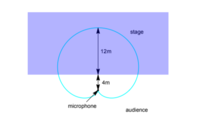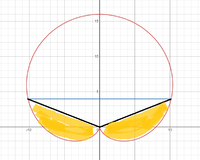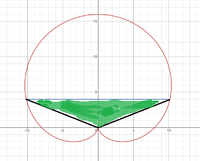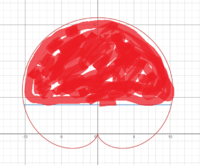Mampac
New member
- Joined
- Nov 20, 2019
- Messages
- 49
Good day,
I'm given a cardioid radius r = 8 + 8 sinϕ and i have to find its SECTOR.
I know the formula for obtaining the area of this cardioid, and I can obtain it, but I need to subtract from it the not-highlighted part.
So far I had a thought about:
1) moving the cardioid 4 points down the y-axis and compute the area enclosed by the cardioid and the x-axis, but I realized I don't have the parameters (such that the cardioid is represented as a parametric function of x and y). That's why I was wondering: can I get the parameters x, y from the radius? Because I have solved such a problem but it provided me with the definitions of x and y.
2) computing the area of cardioid using Reimann sums... I remember stuff about subtracting bottom function from the top function: in this case, the bottom function could be 4. but isn't this polar space? I'm not allowed to do it, am I? Moreover, the area functions are different.
Any thoughts on how to proceed? It seems like I know all the formulae but can't see how to advance in this problem.

I'm given a cardioid radius r = 8 + 8 sinϕ and i have to find its SECTOR.
I know the formula for obtaining the area of this cardioid, and I can obtain it, but I need to subtract from it the not-highlighted part.
So far I had a thought about:
1) moving the cardioid 4 points down the y-axis and compute the area enclosed by the cardioid and the x-axis, but I realized I don't have the parameters (such that the cardioid is represented as a parametric function of x and y). That's why I was wondering: can I get the parameters x, y from the radius? Because I have solved such a problem but it provided me with the definitions of x and y.
2) computing the area of cardioid using Reimann sums... I remember stuff about subtracting bottom function from the top function: in this case, the bottom function could be 4. but isn't this polar space? I'm not allowed to do it, am I? Moreover, the area functions are different.
Any thoughts on how to proceed? It seems like I know all the formulae but can't see how to advance in this problem.




